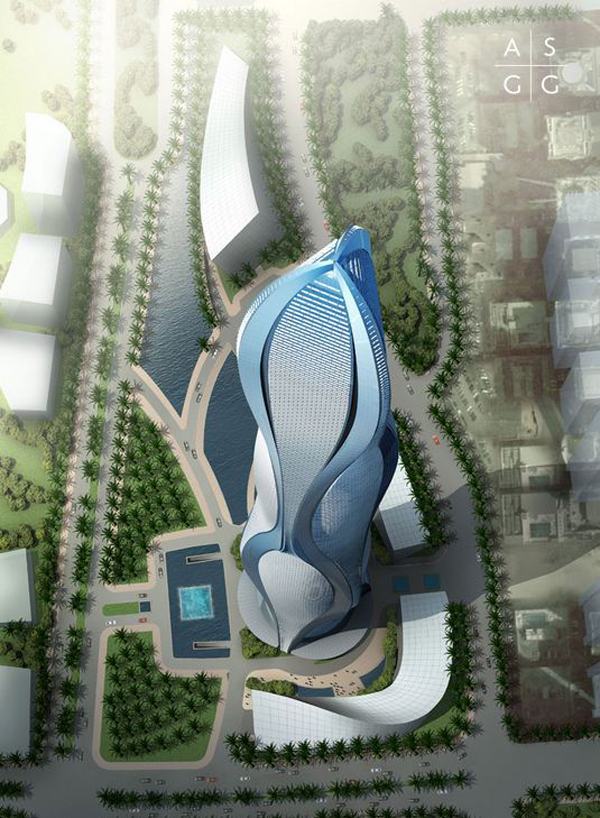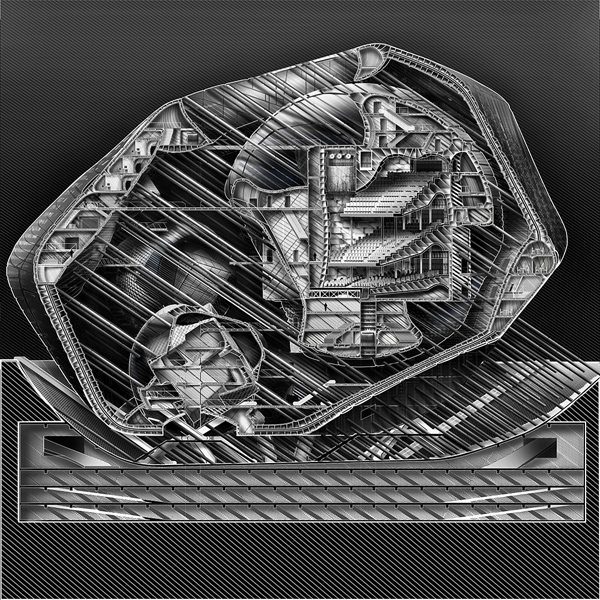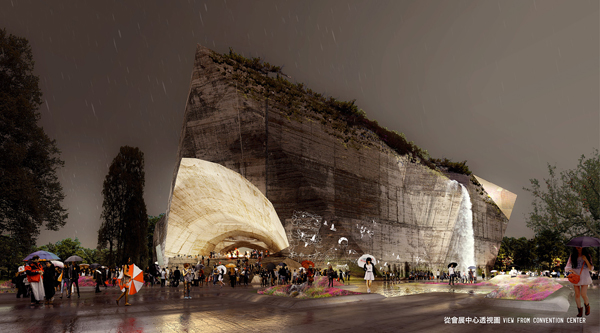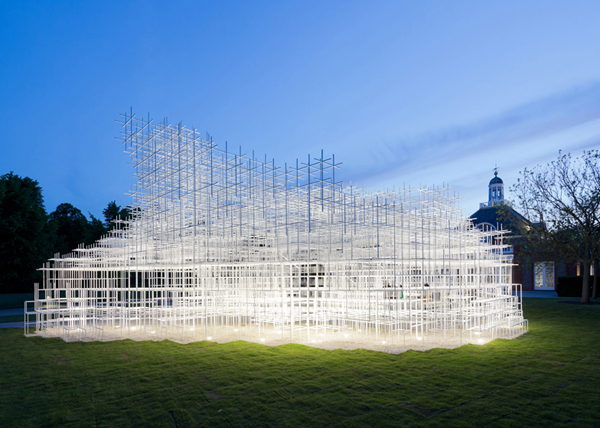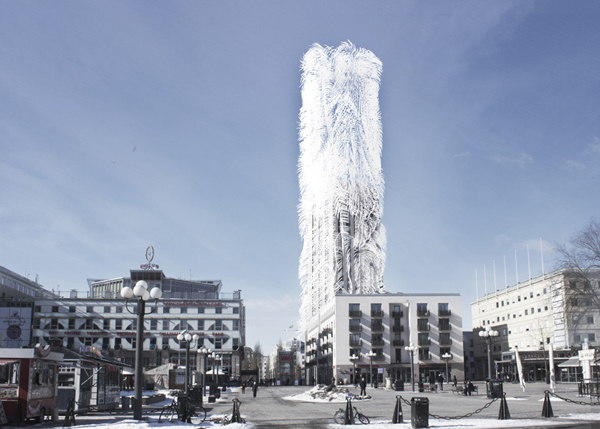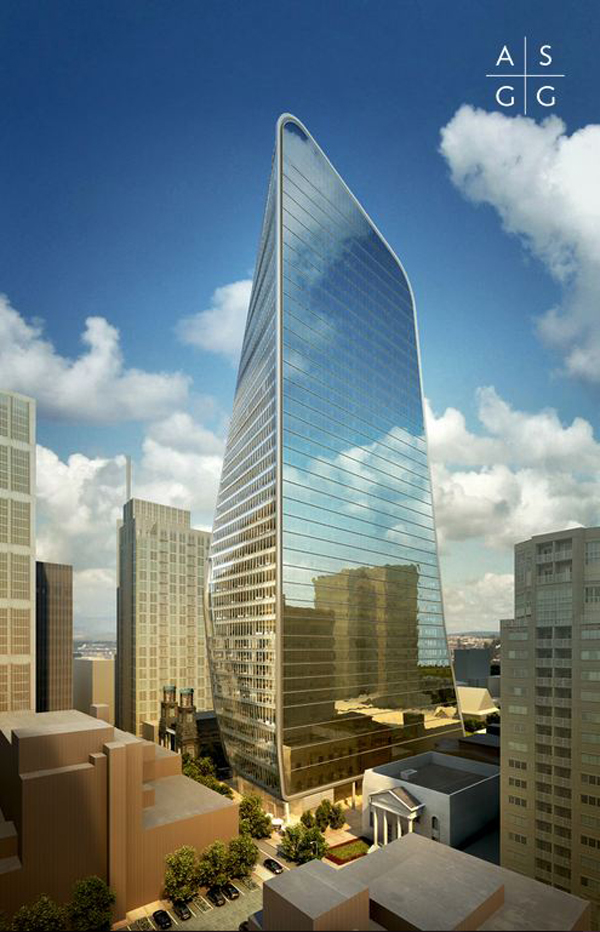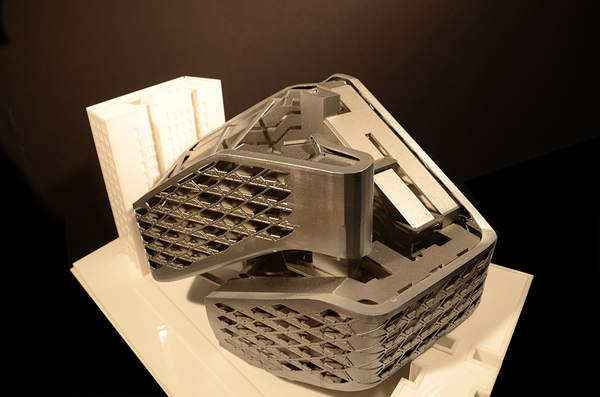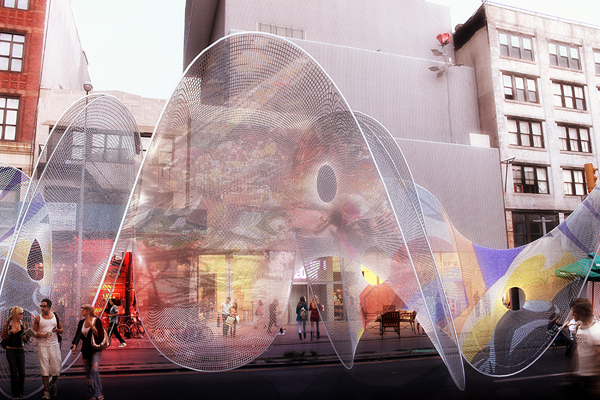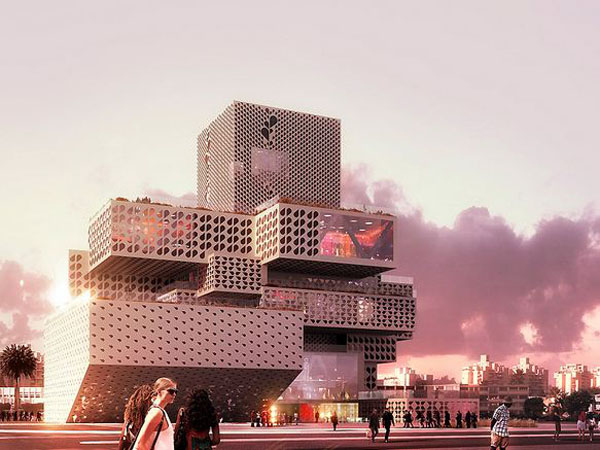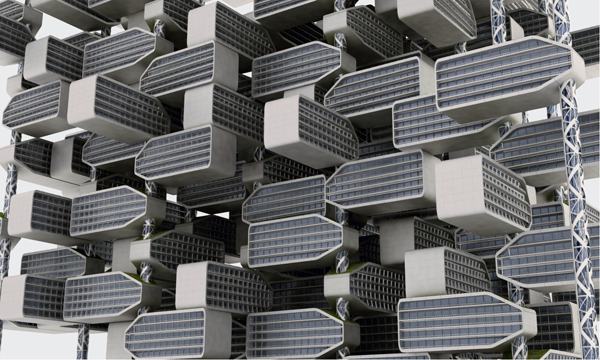1 Park Avenue is a 550-meter, 116-story tower in Dubai, designed by Adrian Smith and Gordon Gill Architecture. The development, with a trio of podium buildings as a base, is a signature design for Dubai’s Jumeira Gardens. Undulating sculptural form of the skyscraper, as a string of pearls – traditionally harvested and traded in Dubai for generations – ensures poetic and evocative appearance of this landmark architecture.
1 Park Avenue is also a representative example of cutting-edge sustainable design. The transparent skin of the skyscraper features a high-performance exterior wall, controlling the heat transfer and light from outside, with the combination of the high-tech system of light shelves and light-sensor-activated shades. Shading fins jut out above each floor, shading the glass beneath, which allows for a more transparent curtain wall and adds visual texture to the building skin. The façade comes with the integrated photo voltaic cells, which harvest solar energy.
The complex houses premium office space, condominiums and service apartments, along with high luxury hotel, on 600,000-square-meters of space. Three podium buildings, whose form complements the form of the tower, facilitate offices and support for the hotel. Read the rest of this entry »

